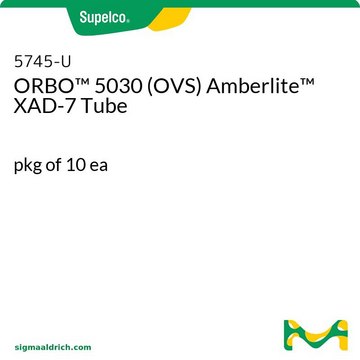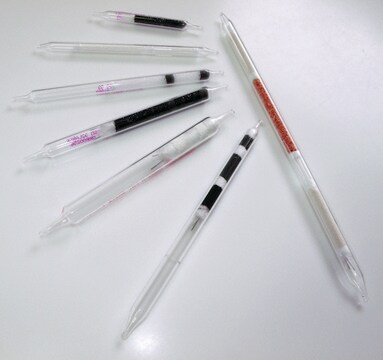20349
ORBO-47 100/50 MG PK/50
W,W,W separators, O.D. × L 6 mm × 90 mm, pkg of 50 ea
About This Item
Produits recommandés
Matériaux
W,W,W separators
Niveau de qualité
Agence
NIOSH 2546
OSHA 32,110
Gamme de produits
Amberlite™
ORBO™
Composition
Bed A, 100 mg
Bed B, 50 mg
Conditionnement
pkg of 50 ea
Fabricant/nom de marque
ORBO™ 47
Technique(s)
active air sampling: suitable
D.E. × L
6 mm × 90 mm
Matrice
XAD-7 (specially treated)
Application(s)
air monitoring
environmental
industrial hygiene
Description générale
Informations légales
Vous ne trouvez pas le bon produit ?
Essayez notre Outil de sélection de produits.
Code de la classe de stockage
11 - Combustible Solids
Classe de danger pour l'eau (WGK)
WGK 3
Point d'éclair (°F)
Not applicable
Point d'éclair (°C)
Not applicable
Faites votre choix parmi les versions les plus récentes :
Certificats d'analyse (COA)
Désolés, nous n'avons pas de COA pour ce produit disponible en ligne pour le moment.
Si vous avez besoin d'assistance, veuillez contacter Service Clients
Déjà en possession de ce produit ?
Retrouvez la documentation relative aux produits que vous avez récemment achetés dans la Bibliothèque de documents.
Les clients ont également consulté
Notre équipe de scientifiques dispose d'une expérience dans tous les secteurs de la recherche, notamment en sciences de la vie, science des matériaux, synthèse chimique, chromatographie, analyse et dans de nombreux autres domaines..
Contacter notre Service technique








